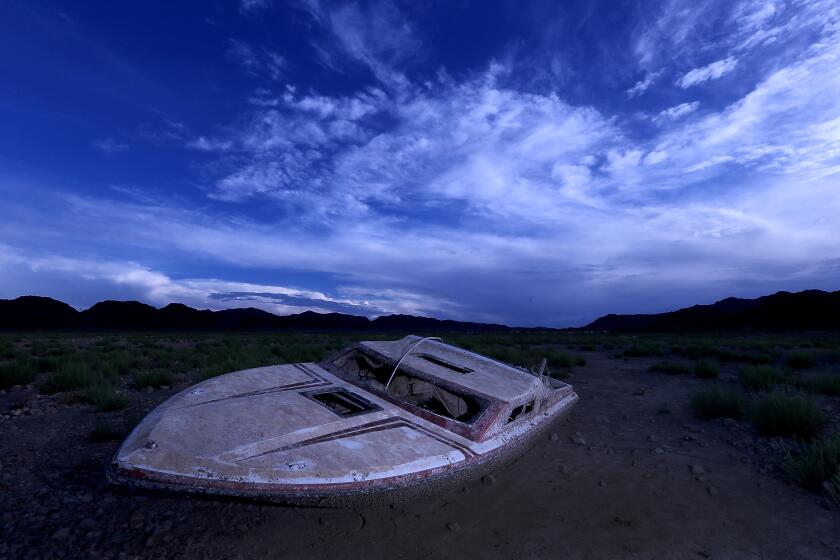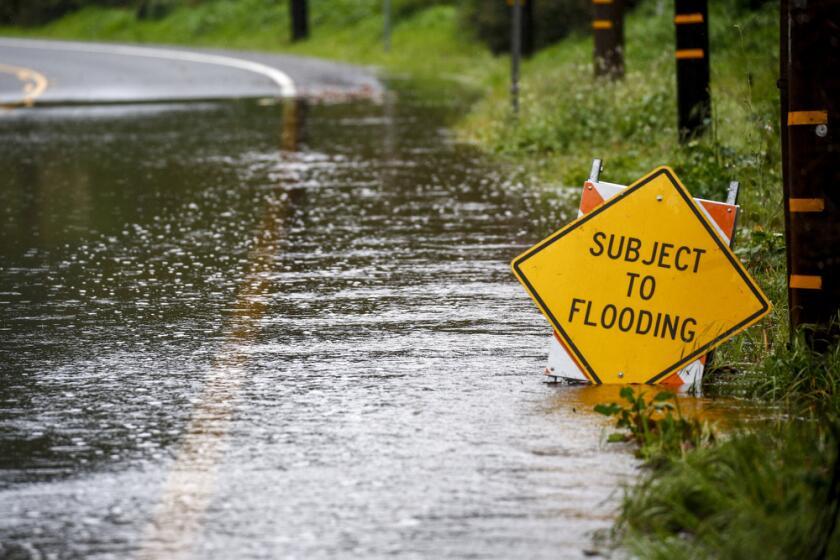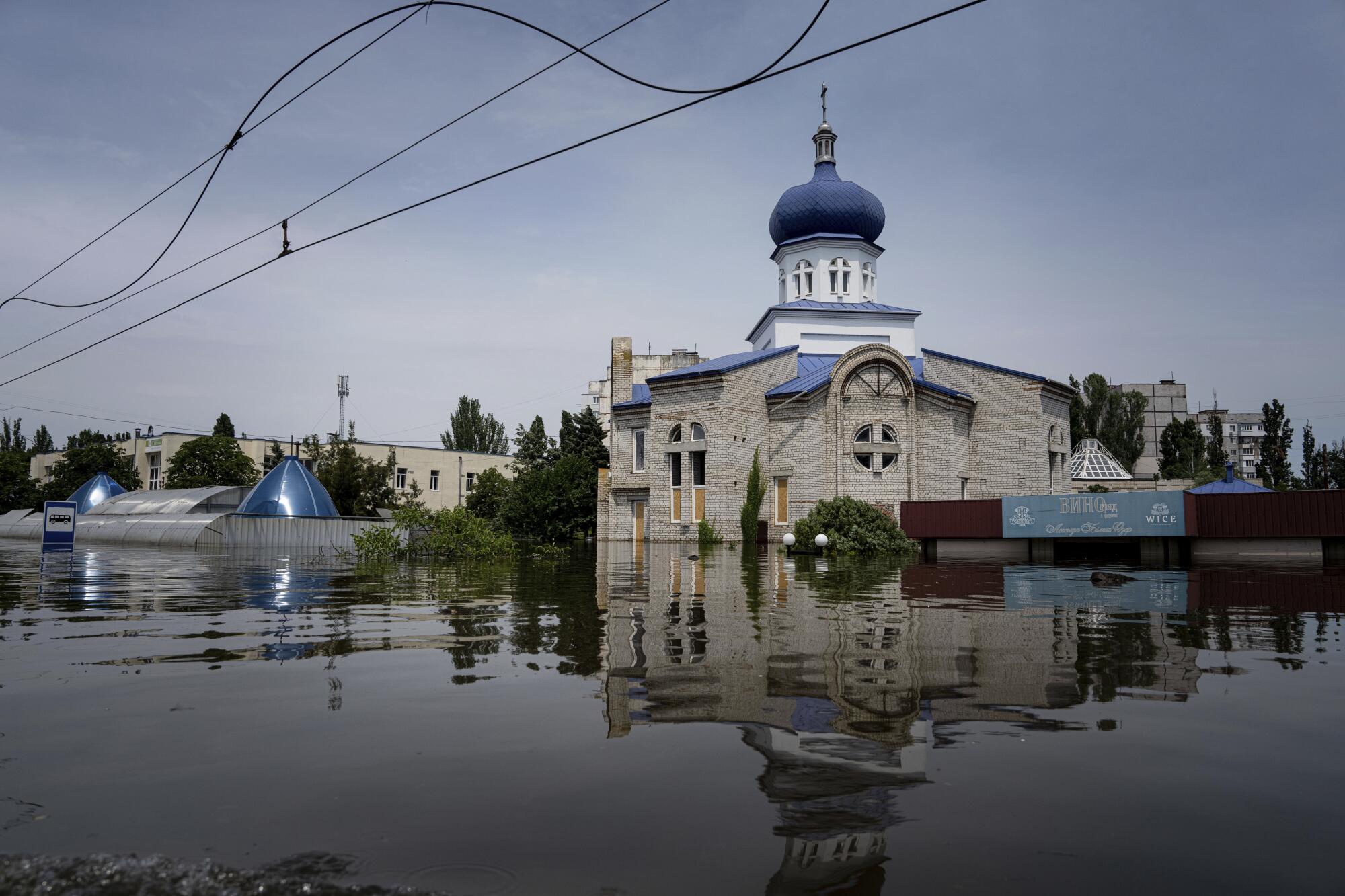
Six months ago, an explosion ripped apart Kakhovka Dam in Ukraine, unleashing floods that killed 58 people, devastated the landscape along the Dnipro River and cut off water to productive farmland.
The destruction of the dam — which Ukrainian officials and the European Parliament blame on Russia, even though the structure was under Russian control — was one in a series of attacks on water infrastructure that have occurred during the Russia-Ukraine war.
Alongside those strikes, violence linked to water has erupted this year in other areas around the world.
Aggressive and impactful reporting on climate change, the environment, health and science.
In countries including India, Kenya and Yemen, disputes over water have triggered bloodshed.
And on the Iran-Afghanistan border, a conflict centering on water from the Helmand River boiled over in deadly clashes between the two countries’ forces.
These are some of the 344 instances of water-related conflicts worldwide during 2022 and the first half of 2023, according to data compiled by researchers at the Pacific Institute, a global water think tank. Their newly updated data, collected through an effort called the Water Conflict Chronology, shows a major upsurge in violent incidents, driven partly by the targeting of dams and water systems in Ukraine as well as an increase in water-related violence in the Middle East and other regions.
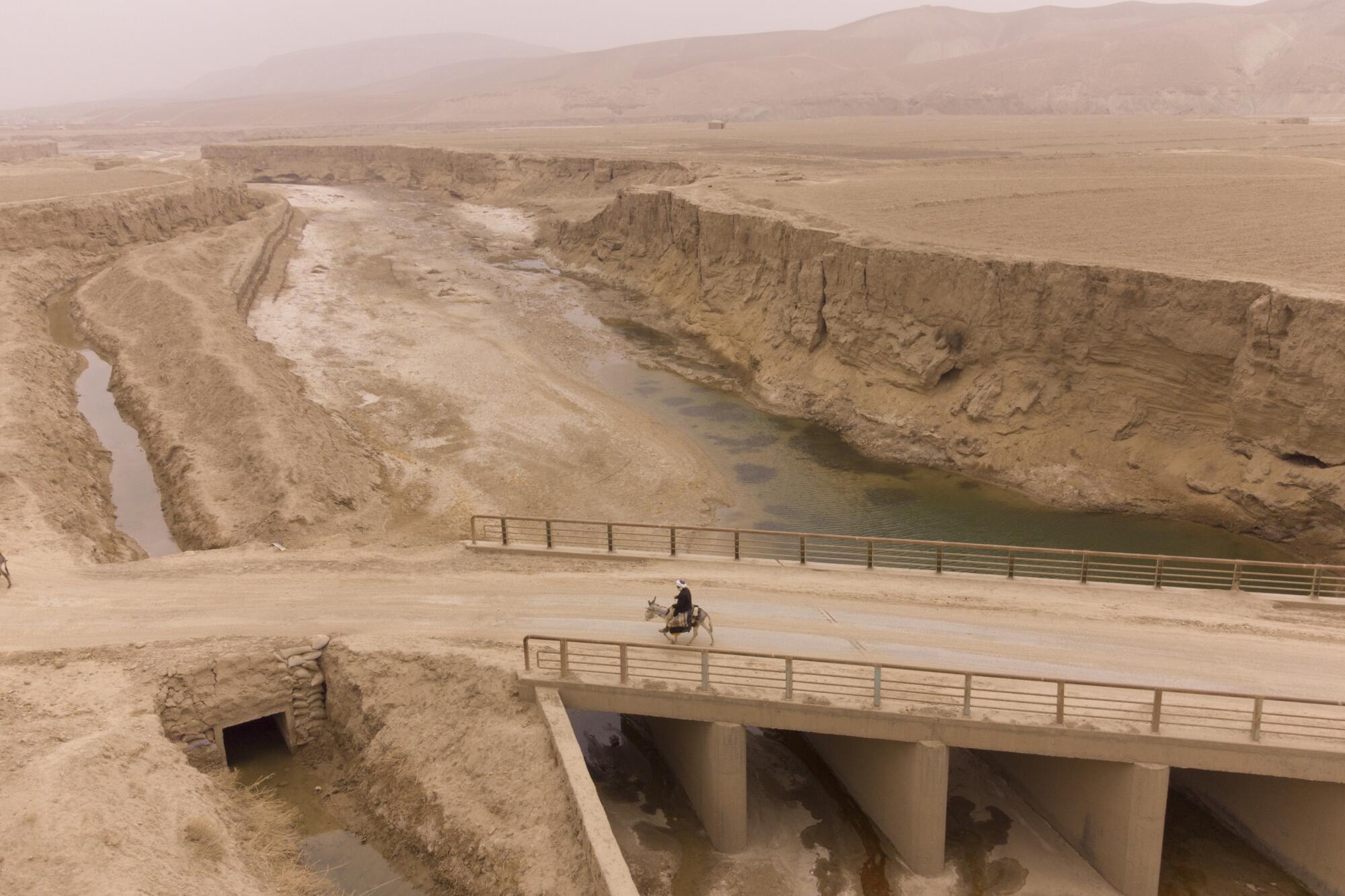
“It’s very disturbing that in particular attacks on civilian water infrastructure seem to be on the rise,” said Peter Gleick, the Pacific Institute’s co-founder and senior fellow. “We also see a worrying increase in violence associated with water scarcity worsened by drought, climate disruptions, growing populations, and competition for water.”
Gleick has been tracking cases of water-related conflict for more than three decades and cataloged the latest incidents with other researchers at the Oakland-based institute.
The database now lists more than 1,630 conflicts. Most of the cases have occurred since 2000, and there has been a rising trend over the last decade, with a spike the last few years.
The researchers collect data from news reports and other sources and accounts. They classify instances into three categories: where water or water systems have been a trigger of violence, used as a “weapon” or have been targeted and become a “casualty” of violence.
Not every case involves injuries or deaths, but many do.
In African countries including Nigeria, Somalia and South Sudan, fighting has erupted between farmers and herders over water sources and land.
“There have been a growing number of incidents where drought has led to violence associated with disputes over control and access to freshwater,” Gleick said.
In South Africa, protests over lack of access to clean water have turned volatile, with people burning tires and throwing rocks at police. During droughts in Iran and India, protests over water shortages have also sparked violence.
“We know that climate change is worsening severe droughts, and that makes me worry that these kinds of incidents will become more common,” Gleick said.
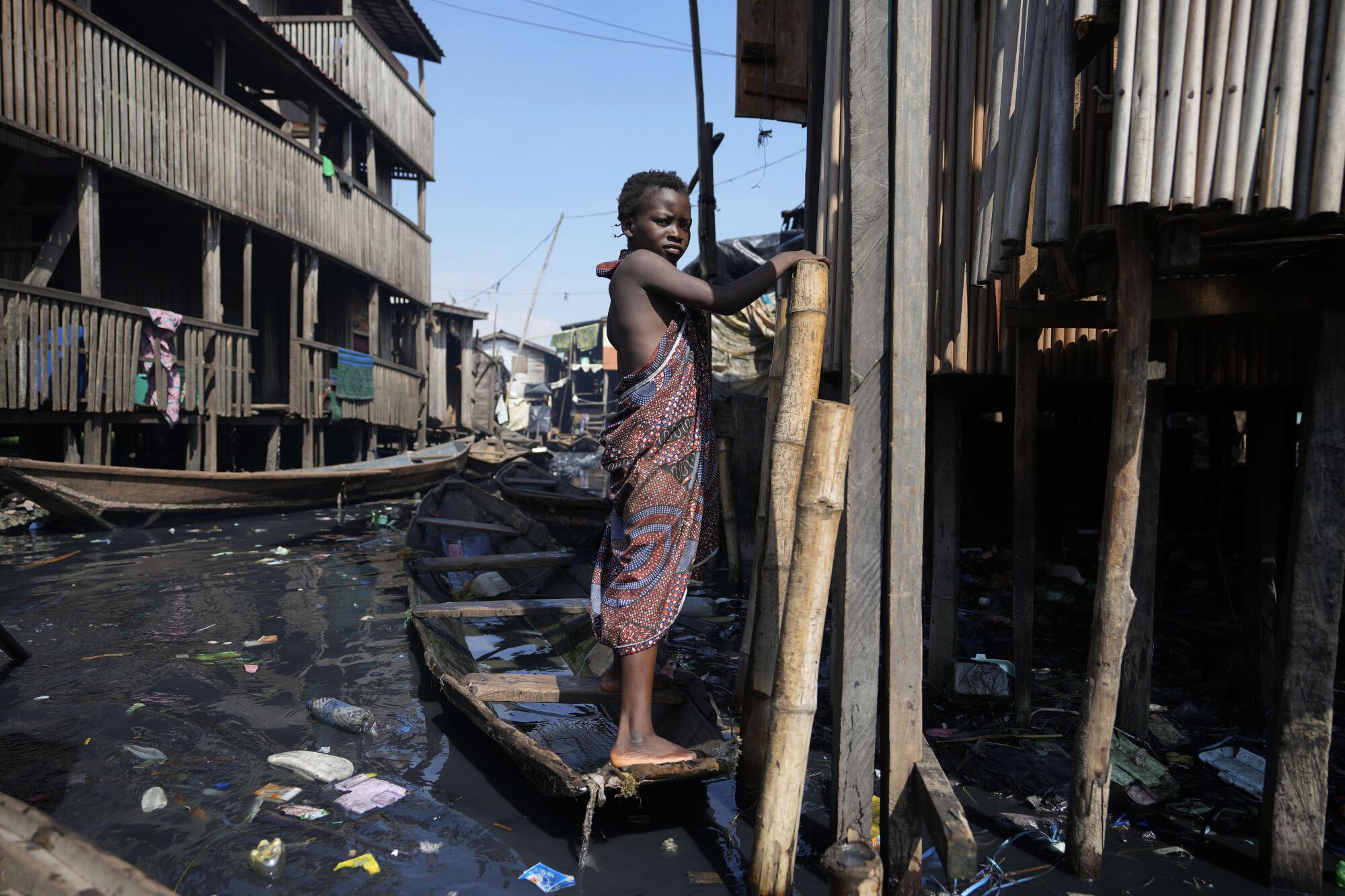
Parsing the mix of factors that lead to water conflicts is complicated and an area Gleick and his colleagues plan to study further — including the role climate change is playing in worsening scarcity and contributing to violence.
During the last two years, they have also seen a large increase in the number of “casualty” incidents, in which water infrastructure is targeted.
The latest additions to the database include 56 incidents from the Russia-Ukraine war, many of them involving attacks on water infrastructure.
In 2022, Russian troops bombed a water system in Kherson and a pumping plant in Chernihiv, and were blamed for deliberately cutting off the water supply to the city of Mykolaiv. Ukraine’s military also flooded lands north of Kyiv to block a Russian assault on the capital.
This year, Russian forces destroyed dams and other infrastructure, and disrupted water supplies for 35,000 people during an assault on Marhanets.
The destruction of Kakhovka Dam has eliminated irrigation for large areas of agricultural land in southern Ukraine, harming food production and the Ukrainian economy.
Many of these attacks appear to violate the Geneva Conventions and other international treaties that prohibit attacks on civilian water infrastructure during war, Gleick said.
The latest data show there have been 107 conflicts over water reported in the Middle East since the start of 2022, with about 60% of those involving incidents between Israelis and Palestinians.
In various cases in the West Bank, Israeli military forces have destroyed Palestinian-owned wells and water systems. Israeli settlers have demolished water tanks and pipes belonging to Palestinians, and seized control of wells and water sources.
And Palestinians have repeatedly clashed with Israeli troops in disputes over wells and springs, including a case in which violence erupted after troops prevented Palestinians from digging a well.
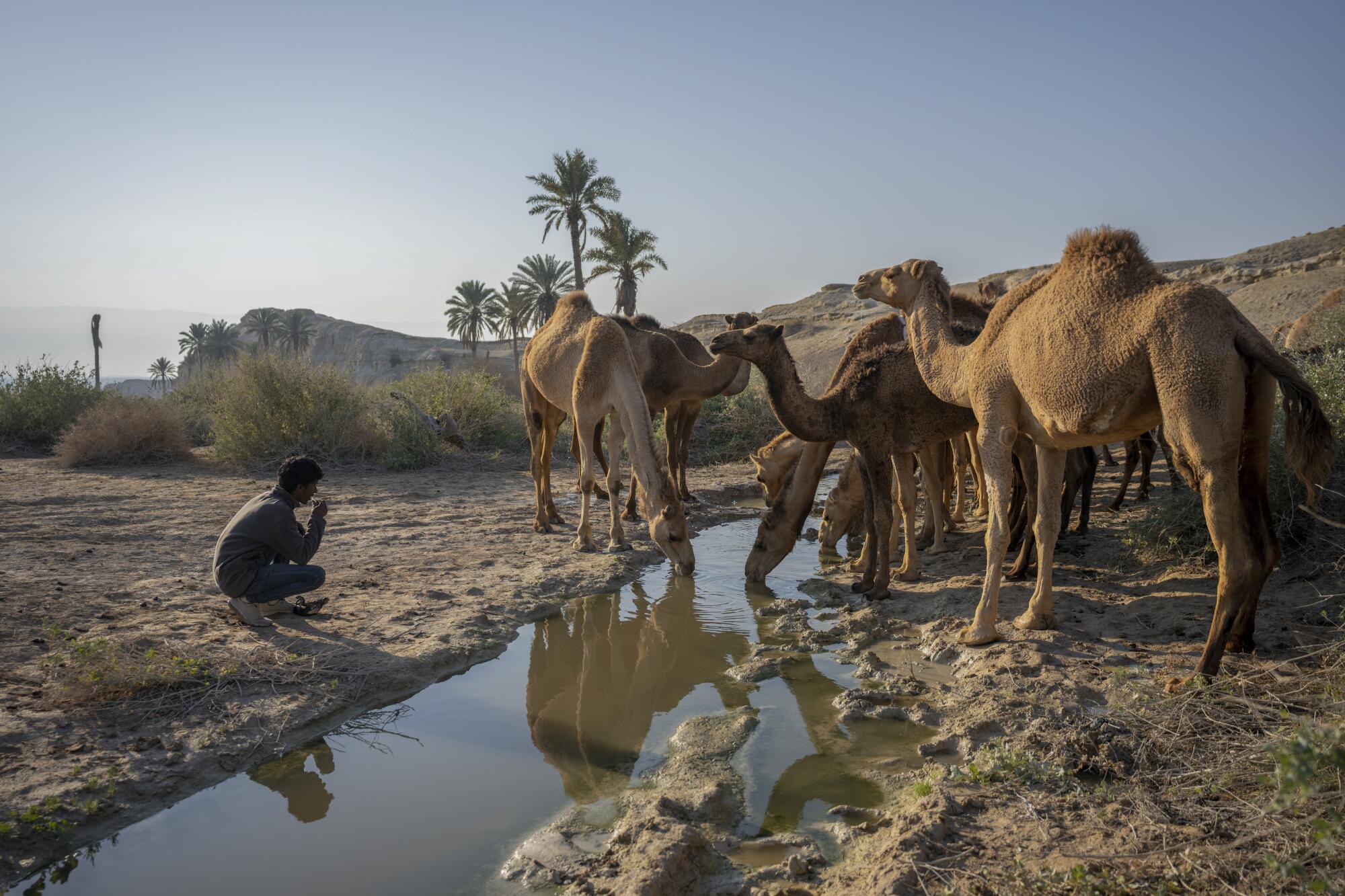
Because the researchers have yet to analyze reports of conflicts during the last six months, they don’t have detailed information about water-related violence in the ongoing Israel-Hamas war.
In the West Bank, incidents involving the destruction of orchards, irrigation systems and water tanks have been happening for years, “but it picked up a lot in the last two years,” said Morgan Shimabuku, a senior researcher at the Pacific Institute.
Elsewhere in the Middle East, there have been deadly fights over control of water sources in Yemen, bombings of water infrastructure in Syria, and clashes during protests over lack of water in Iraq.
Shimabuku said efforts to ease conflicts will require “protecting civilian water infrastructure and resources and developing water-governance structures that are just and equitable.”
The United Nations held its first water conference in decades, focusing on crises and solutions. The U.N. chief said ‘water is in deep trouble’ globally.
Different patterns of violence have emerged in other regions. In Latin America, hundreds of environmental activists have been killed in recent years, including many Indigenous activists.
In one of the most infamous cases, Honduran Indigenous activist Berta Cáceres was shot and killed in 2016 after years of threats over her work to stop a dam project on the Gualcarque River.
There have been many more killings in the last few years. Those listed in the database include the assassinations of a Honduran activist who protested an open-pit mine in 2020, a Honduran activist who was fighting a new dam on the Ulua River in 2021, and an activist in Cuernavaca, Mexico, who had led protests over inadequate water service.
In various cases, Shimabuku said, Indigenous people have been involved in violent conflicts over water and land protection where “government-backed corporate entities are committing violence.”
“A lot of those are people protecting water, because they don’t want a dam built, they don’t want their forests to be destroyed, and their rivers to be destroyed,” Shimabuku said.
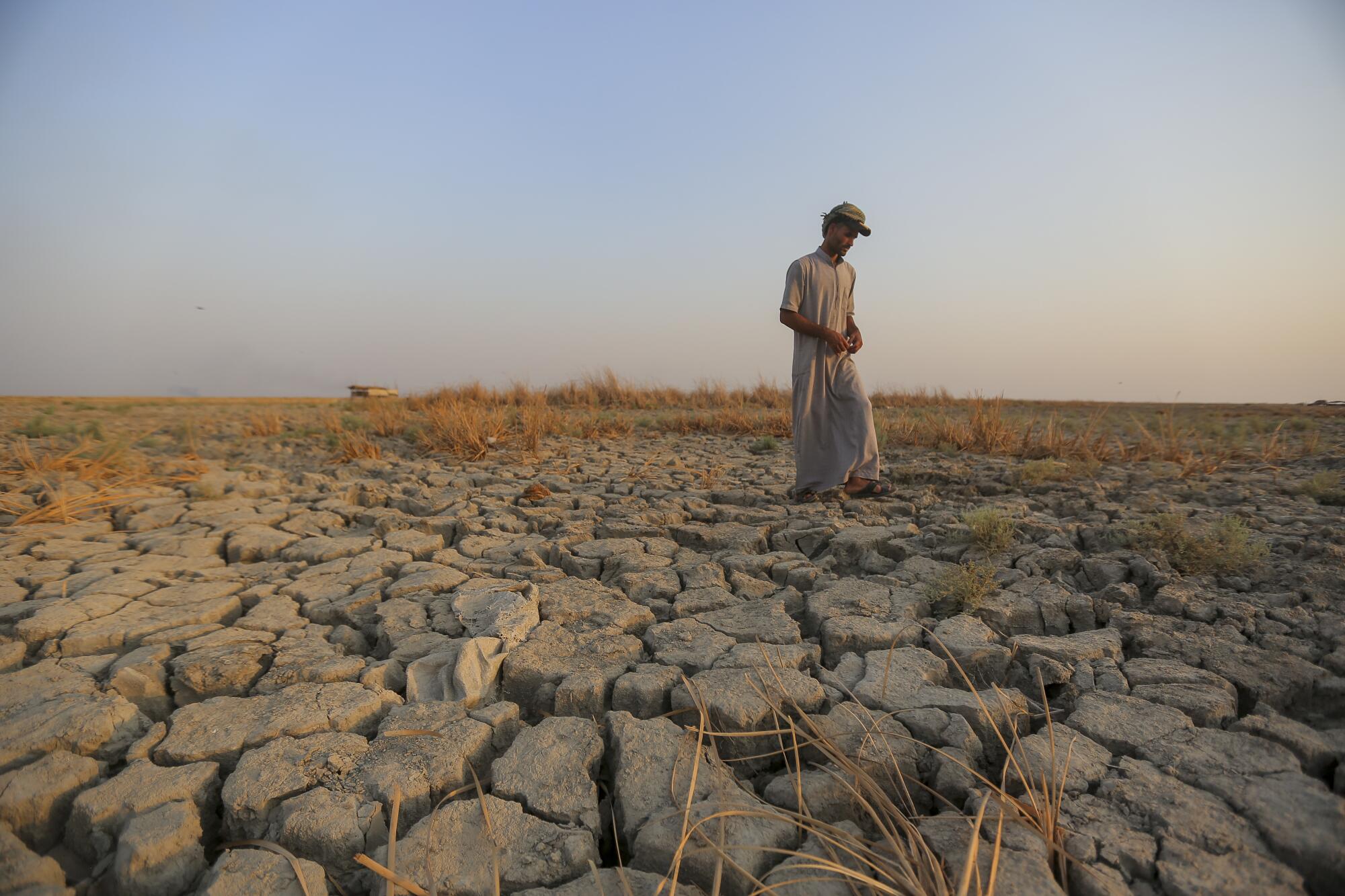
Gleick said one of the goals in tracking data about conflicts is to shed light on connections between water and peace and security.
“Understanding what’s driving these events can help us develop strategies to reduce the risk of violence over water,” Gleick said.
The history of water-related conflicts and the recent rise in violence are among the subjects Gleick analyzes in his book “The Three Ages of Water: Prehistoric Past, Imperiled Present, and a Hope for the Future.”
In it, Gleick presents a wide-ranging and meticulously researched examination of humans’ relationship to water throughout history, from ancient Mesopotamia to the present, and shares a hopeful vision for how societies can address water challenges and move toward a more sustainable future.
Researchers say California’s cities have big potential to use water more efficiently while taking advantage of stormwater and recycled wastewater.
He calls for new thinking and approaches to address lack of water access, worsening pollution, overtapped rivers and aquifers, and collapsing ecosystems. He also envisions a peaceful future where conflicts are dealt with peacefully and water-related violence is fading.
Gleick traces the history of conflicts to the first known war over water nearly 4,500 years ago between the ancient Sumerian city-states of Lagash and Umma in what is now southern Iraq. The conflict’s history was carved into clay tablets and limestone monuments that archaeologists excavated in the floodplains of the Tigris and Euphrates rivers.
He discusses other conflicts over water through the centuries, including the recent example of Syrian civil war, which was ignited in 2011 by a mix of factors including anger at the repressive government, years of drought and the worsening impacts of climate change.
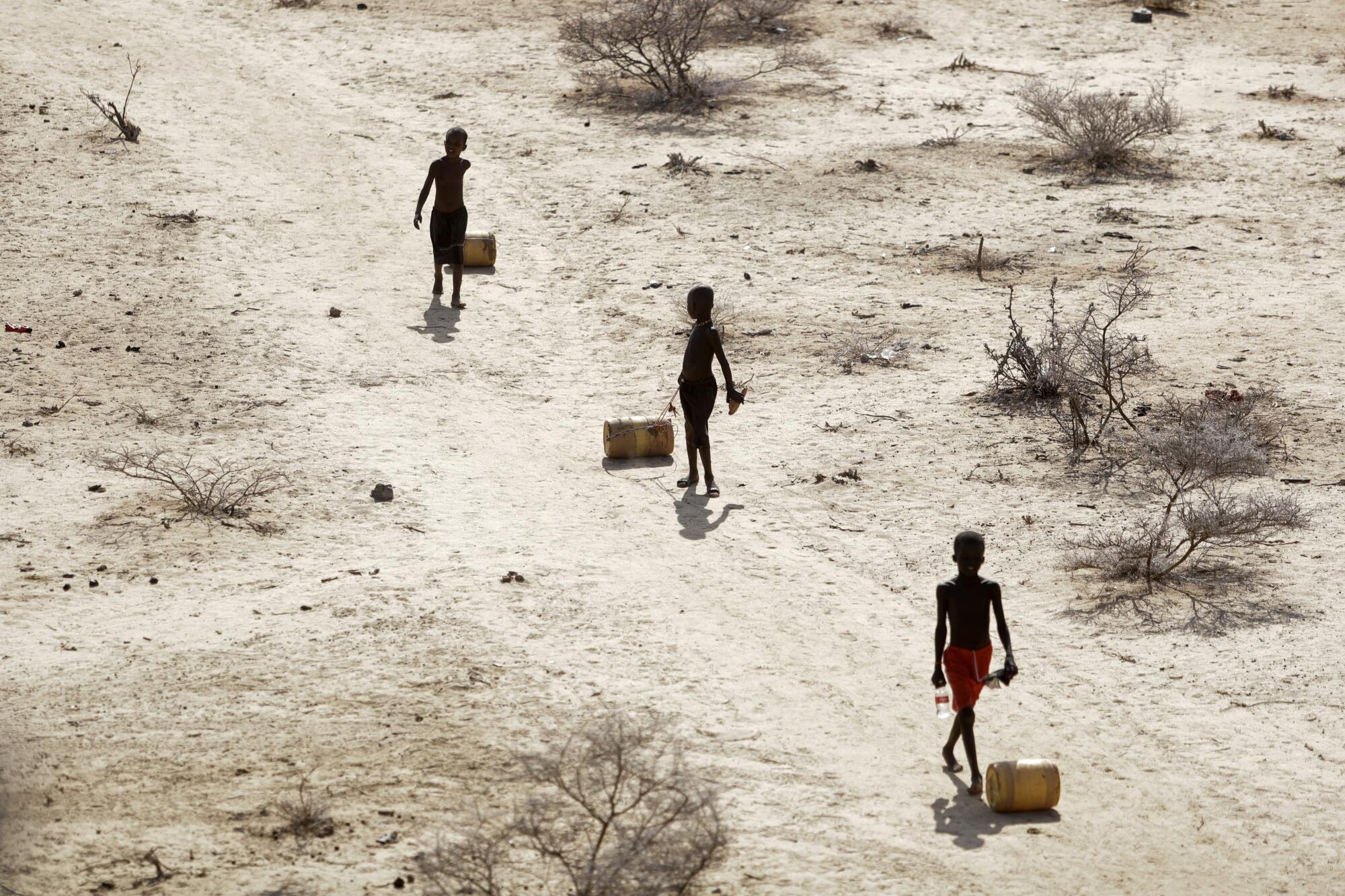
Gleick writes that today violence triggered by water is worsening around the world for reasons including “weak or corrupt governments and water laws, uneven access to scarce water, inequitable distribution of water rights, and extreme droughts that threaten the health and stability of economies and communities.”
Gleick says he believes that “just as water has been a source of conflict and violence, it can be a source of peace, cooperation and sustainable development.”
He described it as an effort to avoid the sort of dystopian future of fighting over water depicted in movies such as “Mad Max.”
Gleick pointed out that in the past there has been bloodshed over water in the western United States, including a conflict between ranchers in 1892 in Johnson County, Wyo.
There are few recent U.S. conflicts in the database. Part of the reason such violence has faded, Gleick said, is because U.S. laws and institutions are stronger than they once were.
“We’ve moved to the courts,” Gleick said. “And while there’s still too many conflicts over water, fighting over things with lawyers is better than fighting over things with guns.”
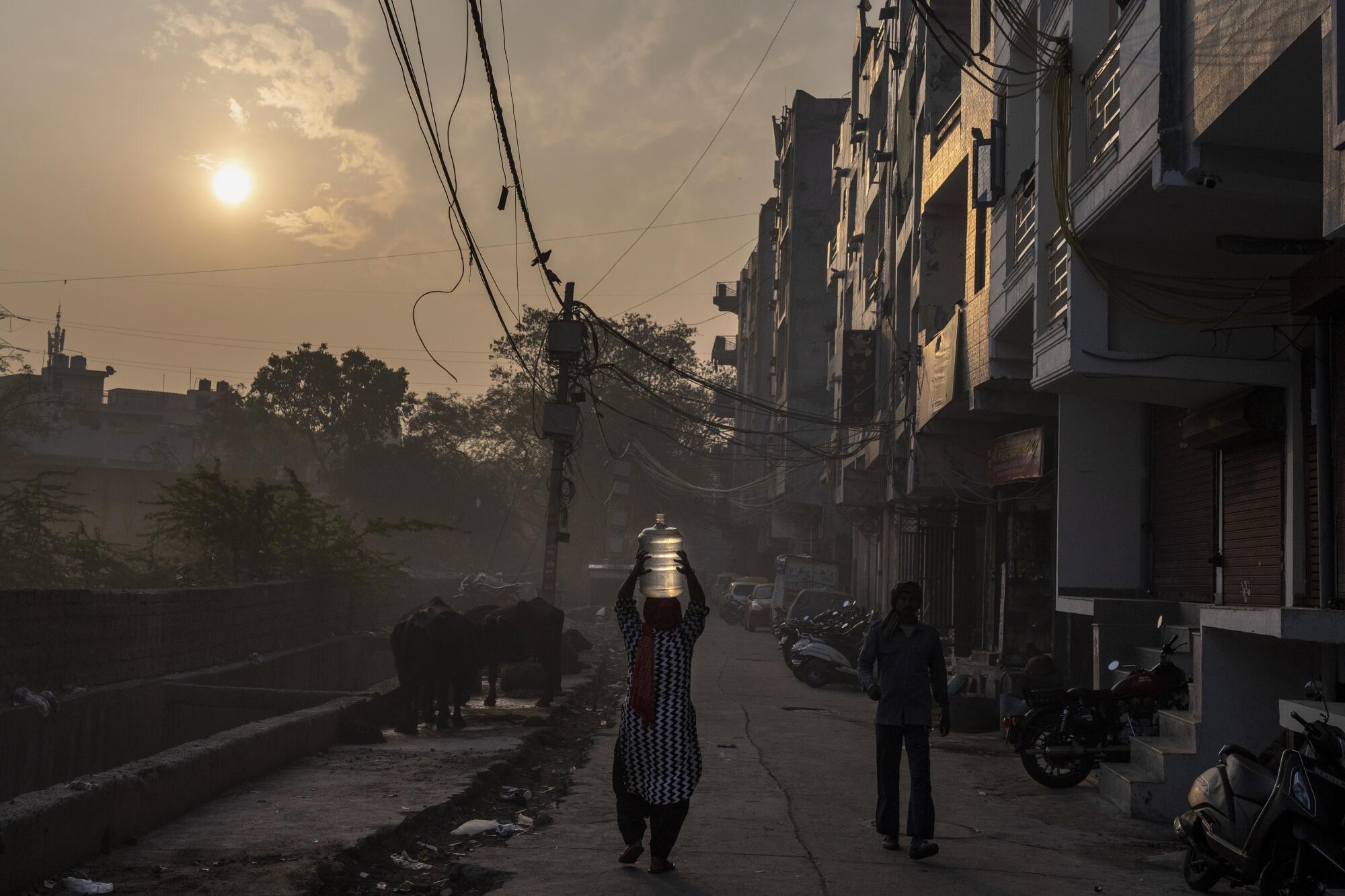
Globally, many conflicts triggered by water happen where institutions are weak, water management is poor, water rights are disputed, or laws are unfairly enforced. A solution, he said, “is to make sure that everyone has access to safe water and sanitation, basic needs, and that the institutions for sharing and allocating water resources, and resolving disputes over water resources, are strong.”
In the book, Gleick writes that our age, which he calls the Second Age of Water, is coming to an end in a series of crises. He offers his vision for how to move toward a more sustainable and peaceful Third Age of Water, calling for multiple solutions, such as ending “water poverty” for the many who lack access to safe water, carrying out an “efficiency revolution” in water use, reforming water institutions, and reaching more water-sharing agreements among countries.
“The overarching point is that what appears to be a growing trend of violence associated with water is a symptom of the broad water crises we face,” Gleick said. “But it’s also an opportunity to tackle the underlying problems of water poverty, of poor institutions, of weak governance, of inequitable access to water and inadequately enforced water laws. And if we can address those challenges, we really have an opportunity to reduce violence associated with water problems.”

